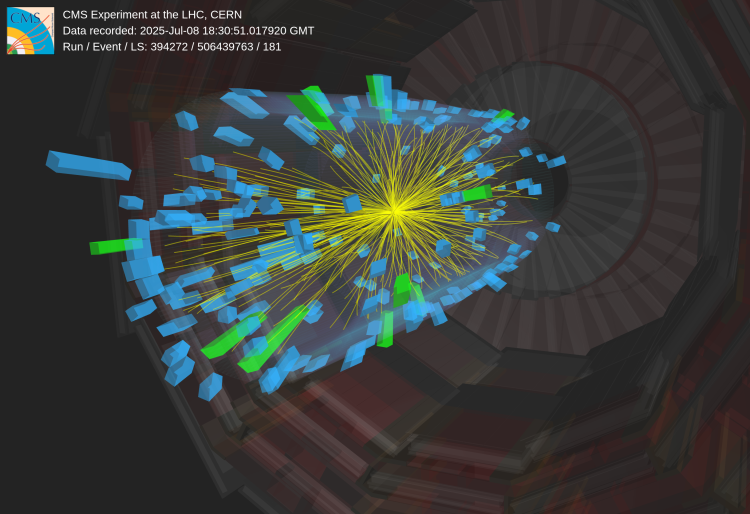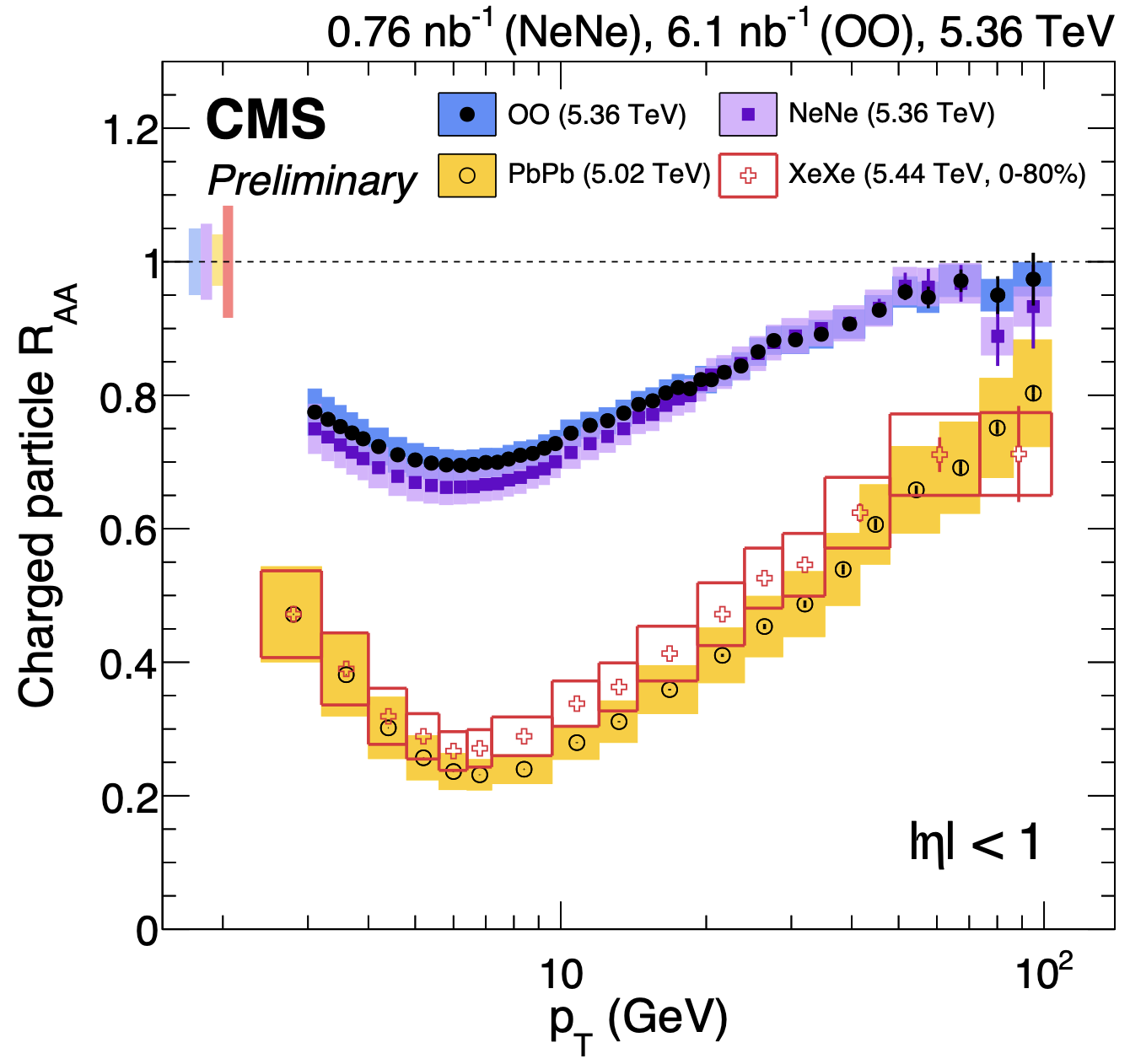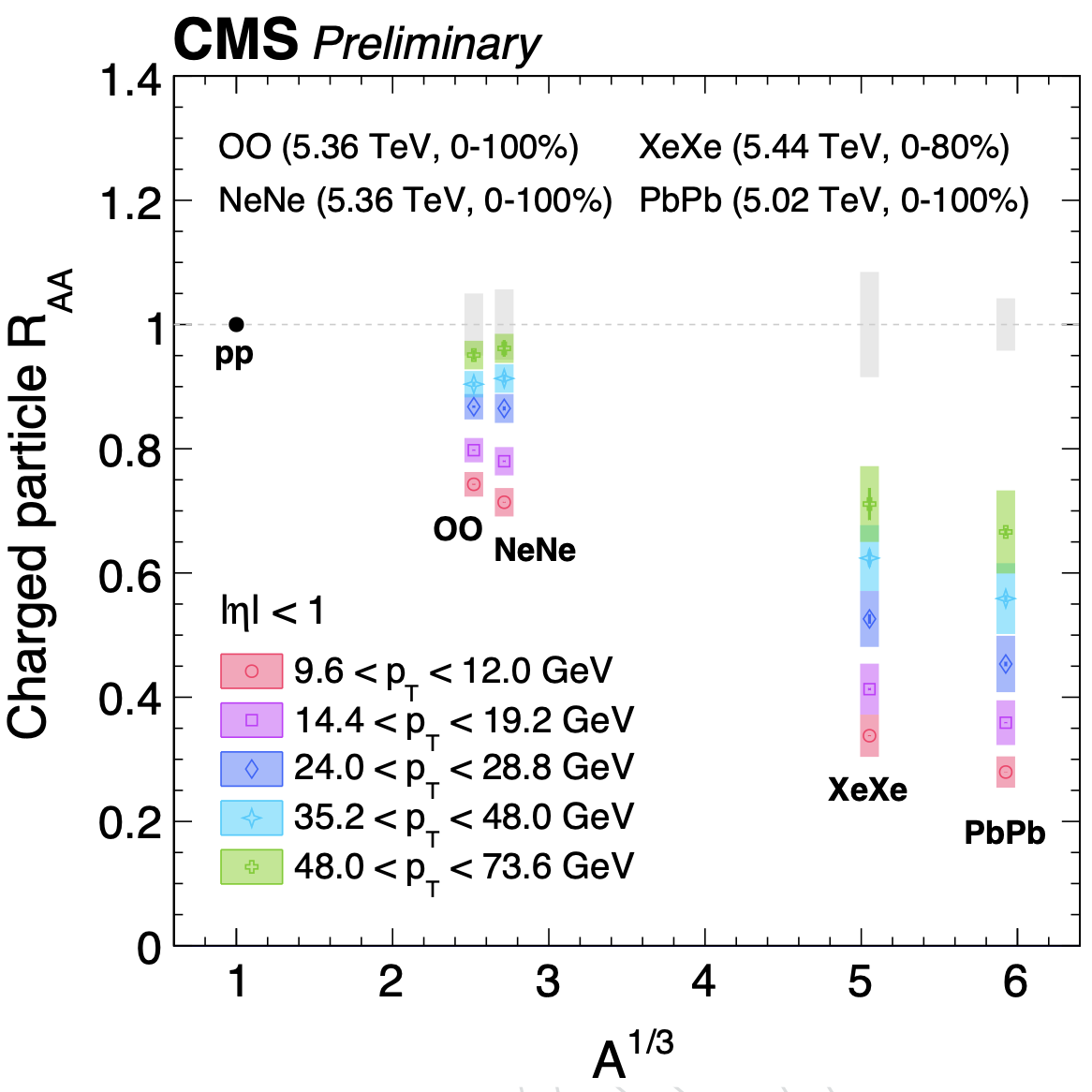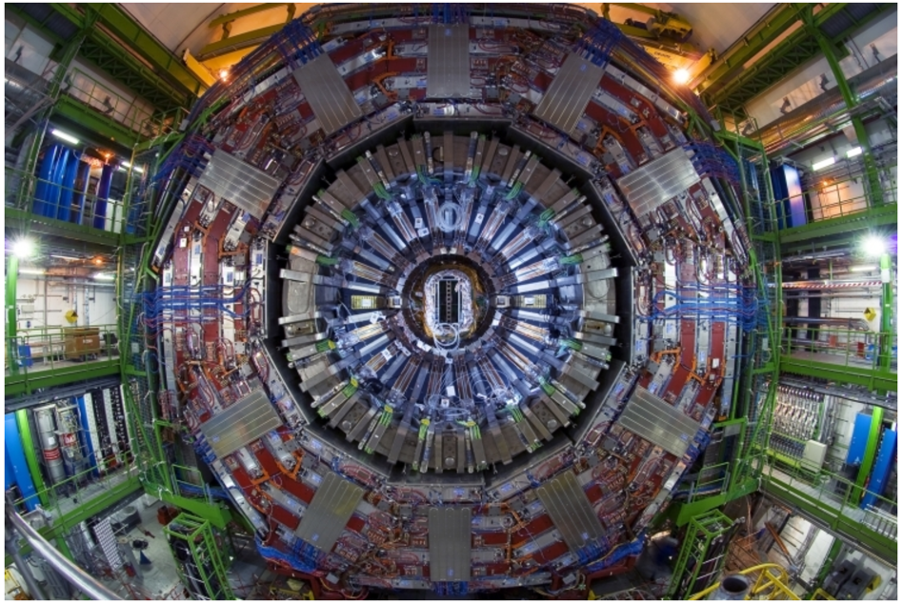
The CMS experiment has analyzed the first-ever neon-neon collisions, looking for signs of quark-gluon plasma. By comparing these results with data from oxygen-oxygen, xenon-xenon, and lead-lead collisions, physicists find an interesting pattern linking energy loss to the distance traveled by particles in the plasma.
In July 2025, the LHC accelerated and collided oxygen-oxygen ions (oxygen ions have 8 protons + 8 neutrons) and neon-neon ions (neon ions have 10 protons + 10 neutrons) at 5.36 TeV, for the first time at this energy. The OO collisions were used by CMS to study the formation of quark-gluon plasma (QGP), a state of matter so hot and dense that quarks and gluons are no longer confined inside protons and neutrons. By observing signs that quarks and gluons – collectively called partons – potentially lose energy as they travel through the QGP, the study with OO data found indications for QGP formation in small-scale systems.
In order to understand these effects better and to identify potential patterns, CMS analyzed NeNe collisions as well. “Ne nuclei are uniquely pear shaped, and slightly larger than O nuclei. Comparing their collisions side-by-side lets us study how both of these geometric considerations influence the behavior of the QGP fireballs produced in heavy ion collisions”, said Abraham Holtermann, a Ph.D. student at the Massachusetts Institute of Technology (MIT) and one of the analyzers of this work.
The CMS experiment measured charged-particle production in NeNe collisions as a function of the transverse momentum (pT) of the particles. The results are expressed as the so-called nuclear modification factor (RAA), which is defined as the ratio between charged particle yield in nucleus-nucleus collisions and a scaled baseline proton-proton yield. The data reveal a clear trend: the ratio reaches a local minimum of about 0.6 at 6 GeV before rising toward unity at 100 GeV. The minimum is more than seven standard-deviations away from the assumption of no-modification. “It has been a rollercoaster of emotions since July 8th, the day we took neon-neon data”, recalls Cristian Baldenegro, a postdoc at MIT, who was closely involved in the collection and analysis of these new data. “We were impressed to see this amount of nuclear modification in both neon-neon and oxygen-oxygen data; the community is very interested in what we will learn from these data.”

Above: The ratio between charged particle yield in nucleus-nucleus collisions and a scaled baseline proton-proton yield (RAA), as a function of transverse momentum (pT), measured by CMS in NeNe and OO collisions at 5.36 TeV, XeXe at 5.44 TeV, and PbPb at 5.02 TeV.
In addition, the data shows that the effect in NeNe collisions is slightly stronger than in OO collisions, which is qualitatively consistent with our expectations. Both measurements are currently limited by uncertainties in the preliminary measurement of collected integrated luminosity, but they provide a first look at how this nuclear modification may depend on nuclear size and parton path length in small collision systems. Sruthy Das, a postdoc at the University of Illinois Chicago and one of the analyzers in this work, remarks: "We’ve always wondered if tiny collisions can really make a droplet of QGP. What’s amazing is that just adding a few more nucleons, i.e., from 16 to 20, already seems to have an effect."
CMS researchers decided to pursue a new idea: the first comparison of nuclear modification versus size of the nucleus – in particular the sum of the number of protons and neutrons, A – for the same pT. These new NeNe (A = 20) results, together with the recent OO (A=16) results, and previously published XeXe (A=129), and PbPb (A = 208) results, allow for the first scan with four different systems. The volume of these nuclei is roughly proportional to A. Therefore, the cubic root A1/3 should be something proportional to their radii: a distance metric. Thus, they also compared RAA versus A1/3, as shown in the figure below, and found the data form a clearer pattern, suggesting there might be an easier way to understand this dependence. Establishing a connection between A1/3 and the path length is challenging, since other properties of the QGP also change with A, such as the QGP temperature or density. This will require a careful examination together with theorists. Overall, these measurements give a better picture of how nuclear modification depends on the nucleus size and highlight the value of light-ion collisions at the LHC for studying parton energy loss in the QGP.
Above: CMS measured how the nuclear modification (RAA) changes with the size of the colliding nuclei. Physicists plotted it against A1/3, a simple way to estimate the “length” a parton travels inside the nucleus. Results are shown for NeNe, OO, XeXe, and PbPb collisions.
Written by: Cristian Baldenegro, for the CMS Collaboration
Edited by: Muhammad Ansar Iqbal
Read more about these results:
-
CMS Physics Analysis Summary (HIN-25-014): "Charged particle nuclear modification factor in neon-neon collisions and system-size dependence of nuclear suppression effects"
-
@CMSExperiment on social media: Bluesky - Facebook - Instagram - LinkedIn - TikTok - Twitter/X - YouTube

